I am at this moment birding my way through the Highlands of Scotland, but on the weekend I stayed on the Shetland Islands for three days – my first ever visit and the furthest north I have ever been in Britain. The landscape was remarkable and the birds incroyable!
A very early flight on the morning of Friday 3rd saw us leave behind Aberdeen on a wee propeller-engine tube with wings that surprisingly had extensive leg-room at quite a contrast to our flight from Gatwick the day before. I admit to holding my breath and gripping the arm rests when the plane screeched down onto the rather short runway at Sumburgh which had the sea at each end.
With no time to lose we went straight from the airport up to Sumburgh Head, a rocky promontory looking south with vast cliff-faces on which many seabirds breed in substantial numbers. Despite the sun and it being June there was a northerly wind that would have made a polar bear think twice about getting out of the car. Yet we did with sniveling noses and were rewarded with sheer rocks coated in guano from hundreds of Guillemots, Fulmars (one of the commonest birds on Shetland), Razorbills, Kittiwakes, Shags and the ever-delightful Puffins. More excitingly were some fly-by Great Skuas (or Bonxies as they are called up north) a lifer for me, though we were to see hundreds throughout the next few days.
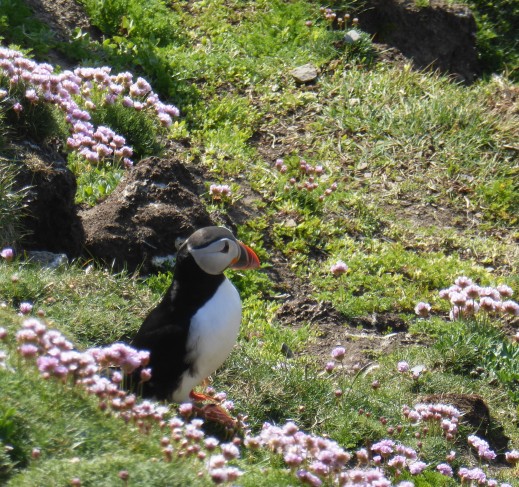
We unsuccessfully attempted to see a reported Eastern Olivaceous Warbler in a wee hamlet (no way it was showing in that wind) before moving onto a largely empty tidal pool where we met a local birder who proceeded to oblige us with a tour of the area. He showed us a nearby Loch where a pair of Whooper Swans (lifer for me) had nested and fledged 6 cygnets – quite a bonus indeed and very grateful we were to that kind guy.
We then made our own way to the largest town on Shetland – Lerwick where we grabbed lunch and ate it watching over the bay between the town and the island of Bressay. It was in this wide bay that we saw our first Eiders of the trip, a pair resting on seaweed and our first ever Black Guillemots (called Tysties), several of which were swimming on the sea fairly close-in; truly gorgeous birds.
Saturday was a busy day involving a drive up the mainland to catch a ferry over to the isle of Yell then up that island to catch another ferry to Fetlar – our destination. On the drive up we spotted a pair of Red-Throated Divers on a road-side Loch, the first I have seen in summer plumage; a smooth grey head with pinstriped back of the neck and a burgundy throat patch. We saw two more on a Loch on Yell and four more on Fetlar which were particularly obliging, giving great views.
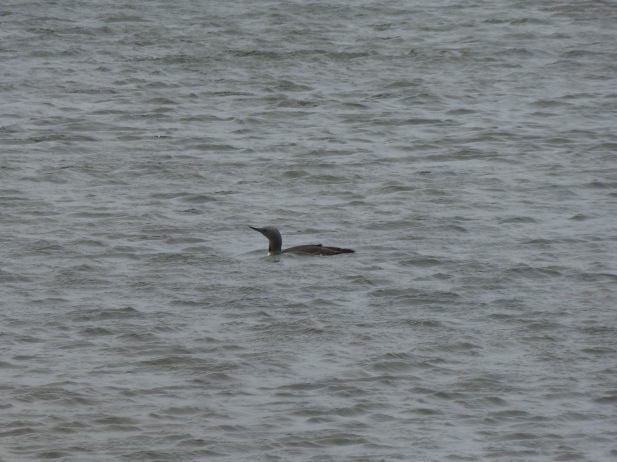
The ferry from Yell to Fetlar was quite fruitful with a swarm of Arctic Terns feeding near the jetty, some being harassed by Arctic Skuas, also passing Guillemots and Tysties and Gannets. Further out in the sound I had a rather brief view of a Great-Northern Diver, the size of the bird being the main give-away, alas it dived and the waves were large so we did not see it again.
After a short drive we came to the RSPB reserve at Loch Funzie (pronounced ‘Finny’ would you believe) where we had a truly special birding experience. Next to the titular Loch was an area of marsh with a hide; it was quite unlike anywhere else in Britain due largely to the birds breeding there. The air was humming with tens of Snipe displaying – these small waders scurried through the air on pointed wings, repeatedly gliding a short distance downwards with special stiff tail feathers spread out to produce a truly unique sound that in the books is described as ‘drumming’. To my ear it was more like the sound made by those hollow wooden frog instruments that you run a stick over the ridged back of – a short vibrating sound more mechanical than animal but when repeated constantly by many Snipe created a magical atmosphere. Adding to the orchestra were the excited high-pitched cries of Redshank and the melancholy warbles of Curlew along with cascades of Skylark song and Meadow Pipit trilling.
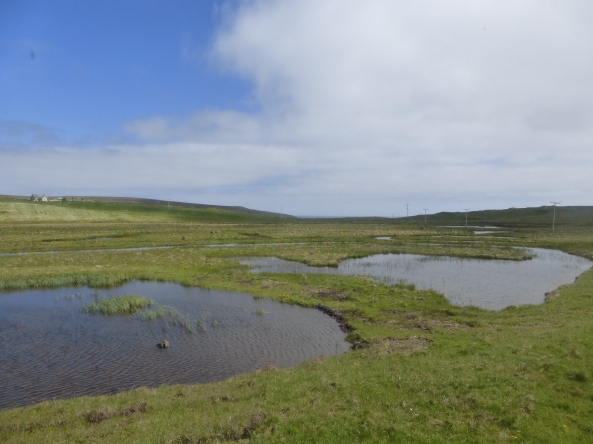
Then to top it all, as we sat in the hide, the star bird of our Shetland trip; the whole reason we went so far, suddenly dropped out of the sky into a small channel and flaunted its grace and beauty. A Red-Necked Phalarope, a female and one of only a handful that breed in the UK, it shot off again into the air, landed once more then flicked its short, sharp wings as it sodded off over a hill. We only saw the bird for 30 seconds or less, yet the petite ballerina-esque poise of this tiny wader along with its gorgeous curve of red on the neck was enough to make it all worth while. All the same we waited another 2 hours for it to return without success.
Our last day on these bleak islands took in many different sites, all in blazing sunshine but still with that blasted north wind biting our skin. I must mention the landscape – completely treeless, with vast expanses of open moorland (covered in the scars of peat-digging) and pasture, there were substantial hills and quite flat bits too, the coastline was very complex with steep craggy cliffs and sublime sandy beaches and endless islands.
We first stopped at the only significant patch of woodland in all Shetland, nothing more than a few copses composed of mainly pines and sycamore. They were home to the only rookery on the islands and we also saw some siskins and a singing Wren (their very own Shetland subspecies too). We then headed down past Lerwick and had lunch on a wee harbour at Sandwick where 4 adult Eider were swimming on the waves with four fluffy ducklings. We then moved south to Loch Spiggie where there was a group of around 55 Bonxies all bathing on the windswept water – we also had a view of a passing light-phase Arctic Skua.
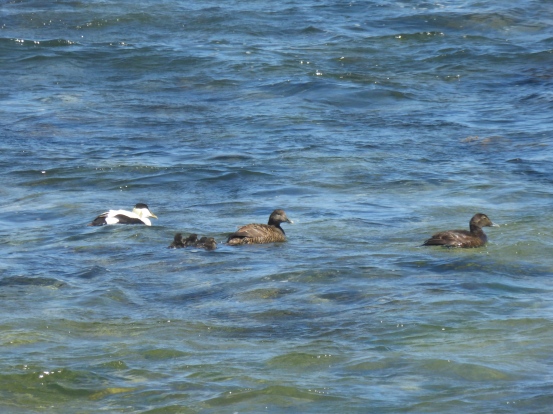
Another bonus bird came in the form of a Crane, standing in a sheep field looking utterly lost and quite giant as birds go – we would have missed this bird too if we hadn’t needed to get petrol and spotted a group of birders eyeing it up on the roadside. The pool of Virkie next to the airport came up trumps as it was low-tide and covered in summer-plumaged Dunlin (gold and black, lovely), Ringed Plover, 11 Bar-tailed Godwits and 3 Knot – one of which was resplendent in bright red summer-plumage. Then a last visit to Sumburgh head to say goodbye, with all the usual seabirds plus a couple of Grey Seals below the cliffs. Then off on the plane over the sea to the wilds of the Highlands!
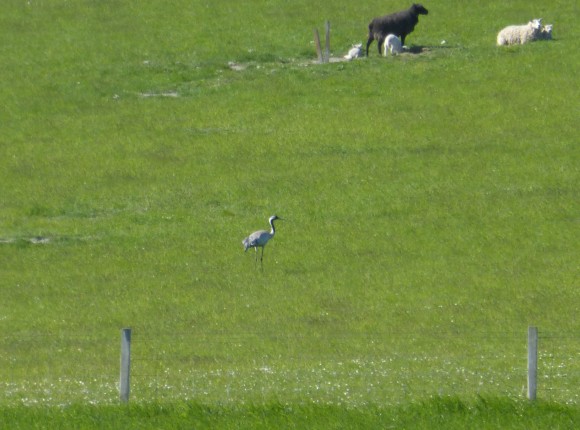
A strange, desolate, beautiful, fascinating, remote, rough, exposed archipelago with amazing wildlife, friendly locals, an over-abundance of peace and quiet, no speed-cameras and a near-lack of night during summer (the sun is below the horizon for all of 4 hours so it never really gets properly dark). A long way to go but worth every minute, if only that evil freezing wind had died down it would have been perfect.
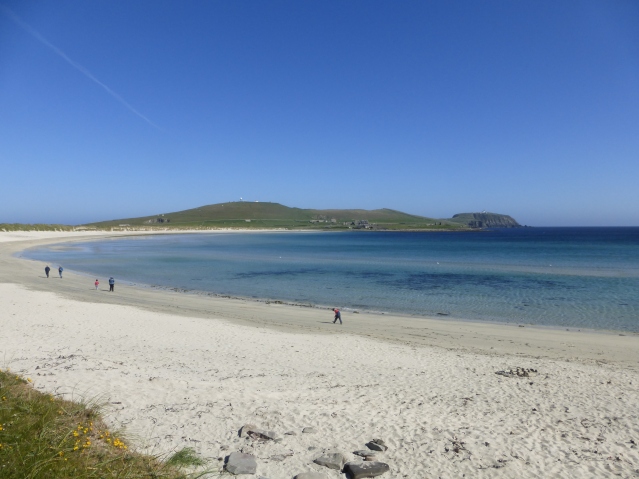


June 10, 2016 at 3:01 pm
wonderful post
LikeLiked by 1 person
June 9, 2016 at 10:21 am
What a trip!
LikeLike
June 9, 2016 at 8:41 pm
Yes indeed, almost once in a lifetime, though I do hope I manage to get back there one day.
LikeLiked by 1 person
June 9, 2016 at 6:57 am
Stunning pics – what an amazing experience! the puffin pic is delightful! and quite amazing to have so much sunshine 🙂
LikeLike
June 9, 2016 at 8:39 pm
Thank you, the lack of rain was the most surprising thing of the trip I think!
LikeLiked by 1 person